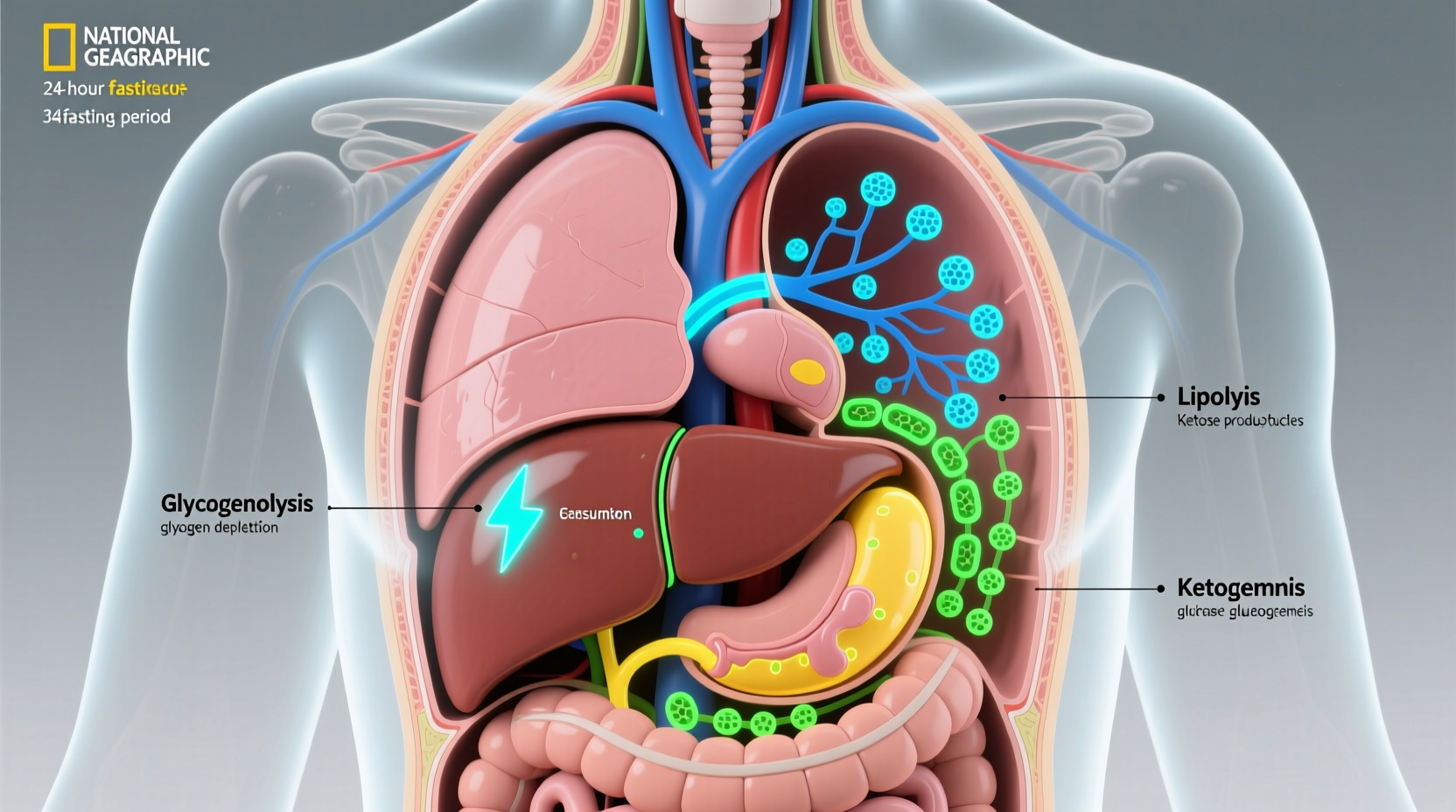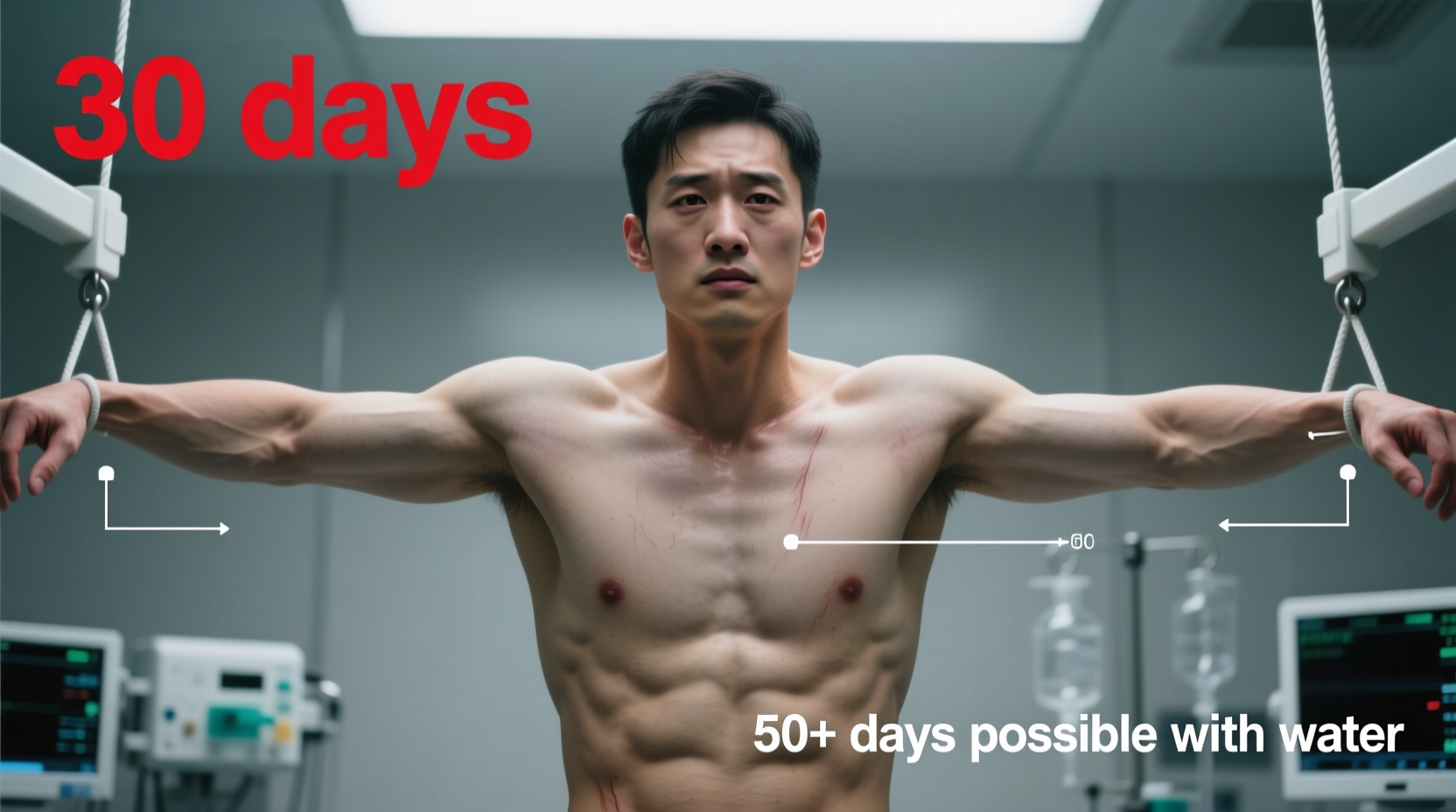Understanding how long humans can survive without food isn't just a morbid curiosity—it's crucial knowledge for emergency preparedness, medical contexts, and recognizing dangerous health situations. This comprehensive guide explains the physiological processes, survival timelines, and warning signs you need to know.
The Body's Energy Timeline: What Happens When You Stop Eating
When food intake stops, your body follows a precise metabolic sequence to maintain energy:
| Time Period | Primary Energy Source | Physiological Changes | Physical Symptoms |
|---|---|---|---|
| 0-24 hours | Glycogen stores | Insulin levels drop, glucagon increases | Mild hunger, possible irritability |
| 24-72 hours | Ketone bodies from fat | Ketosis begins, metabolic rate decreases 5-10% | Headaches, fatigue, stronger hunger pangs |
| 3-7 days | Fat stores | Full ketosis, protein conservation mechanisms | Reduced hunger, mental clarity, possible dizziness |
| 7-21 days | Fat and muscle breakdown | Increased proteolysis, organ function begins declining | Severe weakness, cognitive impairment, edema |
| 21+ days | Essential proteins | Critical organ deterioration begins | Organ failure, extreme weakness, coma |
This metabolic timeline comes from research documented by the National Institutes of Health, which tracks the physiological changes during prolonged fasting and starvation. The transition to ketosis typically begins around day three, when the body shifts from glucose to fat metabolism—a process that can initially cause "keto flu" symptoms including headaches and fatigue.
Key Factors That Determine Survival Time
While the 3-8 week range is commonly cited, individual survival varies significantly based on multiple interconnected factors:
Body Composition Matters Most
Body fat percentage directly impacts survival duration. Research from the Mayo Clinic indicates that individuals with higher body fat can survive longer because fat stores provide more energy reserves. A person with 15% body fat might survive 50-65 days, while someone with only 5% body fat might last just 30-45 days under identical conditions.
Hydration Status Is Critical
Water availability dramatically affects survival time. Without adequate water, survival drops to just 3-7 days regardless of body fat. The World Health Organization emphasizes that dehydration accelerates organ failure and metabolic collapse, making water availability the single most crucial factor in survival duration.
Environmental Conditions Change the Equation
Cold temperatures increase caloric needs by 20-30% as the body works harder to maintain core temperature. The Centers for Disease Control and Prevention reports that in freezing conditions, survival time without food can be reduced by up to 40% compared to temperate environments. Conversely, extreme heat increases fluid loss, compounding dehydration risks.
Age and Health Status Are Decisive Factors
Pre-existing medical conditions significantly impact survival time. According to research published in the American Journal of Clinical Nutrition, individuals with diabetes, kidney disease, or cardiovascular conditions may experience complications within days of food deprivation. Older adults generally have less metabolic reserve and often survive 25-30% shorter durations than younger, healthier individuals under similar conditions.
Recorded Survival Cases: What Science Tells Us
The longest documented survival without food comes from the 1981 Irish hunger strike, where some participants survived 46-73 days with water. However, these cases represent exceptional circumstances with medical monitoring. More typical survival data comes from clinical observations:
- Complete starvation (no food or water): 3-7 days
- Starvation with adequate water: 30-60 days on average
- Therapeutic fasting under medical supervision: Up to 40 days safely
- Severe calorie restriction (500-800 calories/day): Months to years
It's crucial to understand that survival time doesn't equate to health. Organ damage begins long before death occurs. The Nature Scientific Reports published research showing significant cardiac and neurological deterioration after just 21 days of complete starvation, even in previously healthy individuals.
Danger Signs: When Starvation Becomes Critical
Recognizing the progression of starvation can be life-saving. These symptoms indicate increasingly dangerous physiological deterioration:
- Early stage (3-7 days): Persistent hunger, fatigue, mild dizziness, irritability
- Moderate stage (7-14 days): Significant weakness, difficulty concentrating, muscle loss, cold intolerance
- Advanced stage (14-21 days): Severe muscle wasting, edema (swelling), irregular heartbeat, cognitive impairment
- Critical stage (21+ days): Organ failure, extreme weakness, coma, death
The American College of Emergency Physicians emphasizes that medical intervention becomes critical once advanced stage symptoms appear. At this point, refeeding syndrome—a potentially fatal condition caused by rapid reintroduction of nutrients—becomes a serious risk requiring specialized medical management.

Medical Perspectives: Fasting vs. Starvation
It's essential to distinguish between therapeutic fasting and involuntary starvation:
Controlled Fasting: Medical supervised fasting for specific durations (typically 24-72 hours) can have health benefits including improved insulin sensitivity and cellular repair processes. The Johns Hopkins Medicine notes that short-term fasting under medical guidance shows promise for certain metabolic conditions.
Involuntary Starvation: Unplanned, prolonged food deprivation triggers dangerous physiological cascades. Unlike controlled fasting, starvation lacks medical supervision and often occurs with inadequate hydration, accelerating health deterioration.
Refeeding requires medical supervision after prolonged starvation. The UpToDate clinical resource states that improper refeeding can cause fatal electrolyte imbalances, particularly in individuals who have been without food for more than 5-7 days.
Practical Guidance: What You Should Know
If you're considering any form of extended fasting:
- Never attempt fasting beyond 72 hours without medical supervision
- Maintain adequate hydration (at least 2-3 liters of water daily)
- Consult your physician if you have any pre-existing health conditions
- Stop immediately if you experience dizziness, heart palpitations, or severe weakness
- Gradually reintroduce food after extended fasting periods
For emergency preparedness, understanding realistic survival timelines helps set appropriate expectations. The Federal Emergency Management Agency (FEMA) recommends maintaining at least a 14-day food supply for disaster preparedness, recognizing that 3 weeks represents the lower threshold of survival time for many individuals.
Frequently Asked Questions
How long can you survive without food but with water?
With adequate water, most healthy adults can survive 30-60 days without food, though this varies significantly based on body composition, health status, and environmental conditions. The average survival time is approximately 45 days, but individuals with higher body fat percentages may survive up to 8 weeks.
What happens to your body after 3 days without food?
After 3 days without food, your body enters full ketosis, switching from glucose to fat metabolism for energy. Glycogen stores are depleted, insulin levels drop significantly, and ketone production increases. Many people experience reduced hunger at this stage, but may also have headaches, fatigue, and mild cognitive impairment as the body adjusts to this metabolic shift.
Can you survive 2 weeks without food?
Yes, most healthy adults can survive 2 weeks without food if they have adequate water. By this point, the body is in deep ketosis, using fat stores for energy while conserving muscle mass. However, significant weakness, cognitive changes, and physical symptoms like dizziness become common, and medical supervision is strongly recommended if fasting this long.
What are the first signs of starvation?
The earliest signs of starvation include persistent hunger (first 24-48 hours), followed by fatigue, irritability, and difficulty concentrating. As starvation progresses (beyond 3-5 days), symptoms expand to include dizziness, weakness, cold intolerance, and reduced physical performance. These initial symptoms indicate your body is shifting metabolic processes to conserve energy.
How long can you go without food before organ damage occurs?
Significant organ damage can begin after 2-3 weeks of complete starvation. Research shows cardiac muscle deterioration, reduced kidney function, and neurological changes can occur as early as 21 days without food. The liver begins showing damage within 10-14 days as it struggles to maintain glucose production through gluconeogenesis without adequate protein intake.











 浙公网安备
33010002000092号
浙公网安备
33010002000092号 浙B2-20120091-4
浙B2-20120091-4